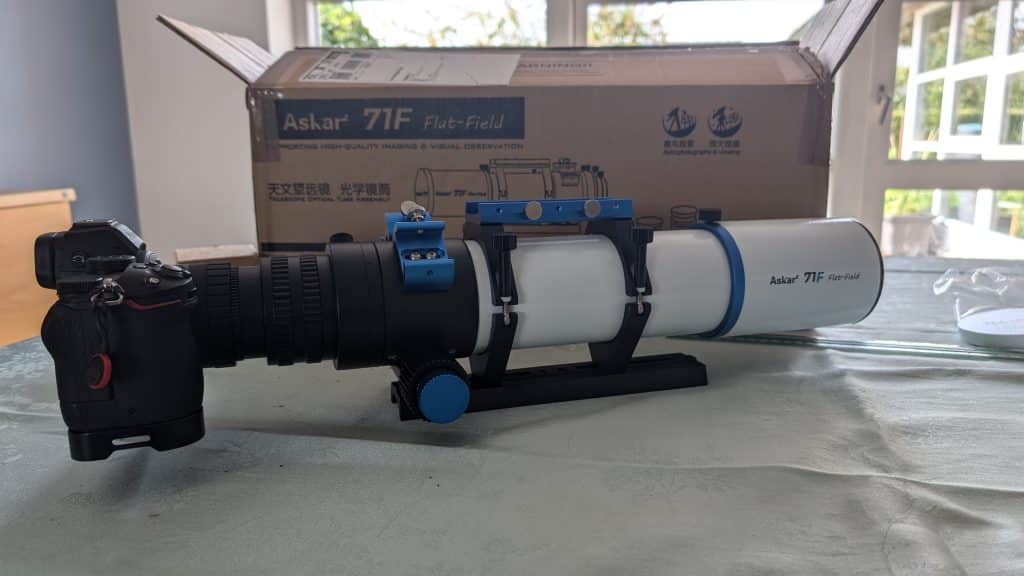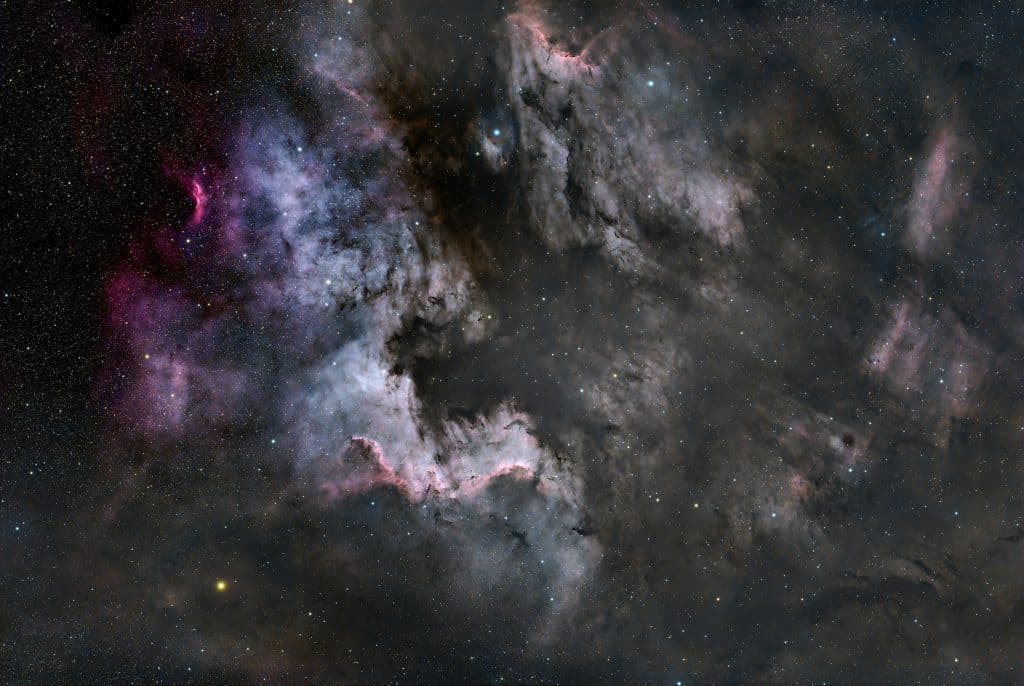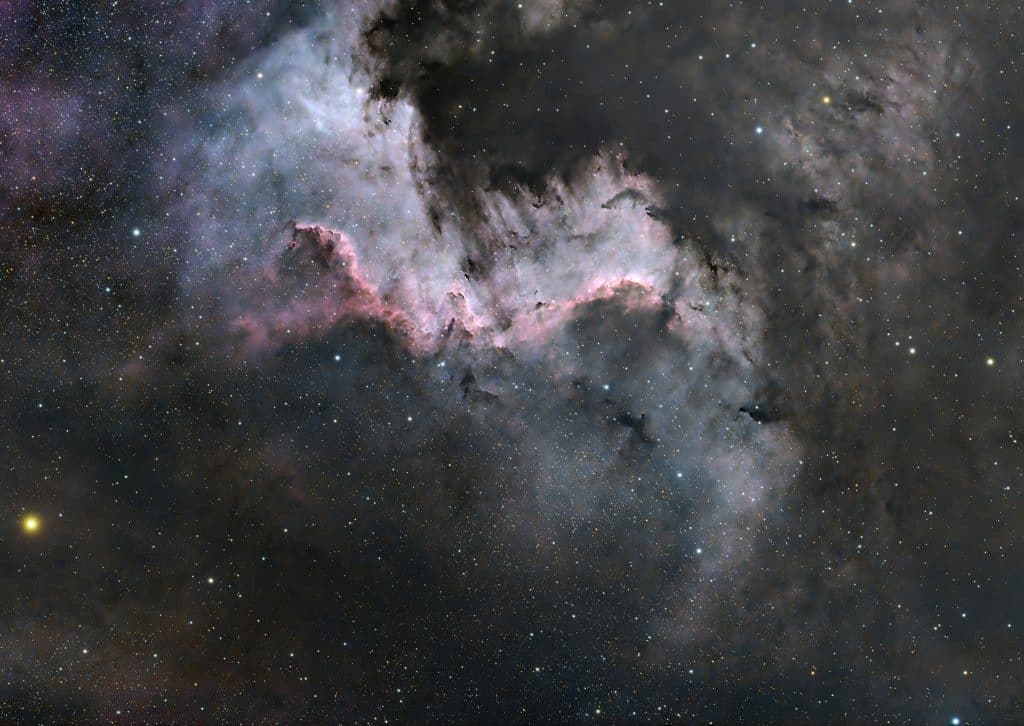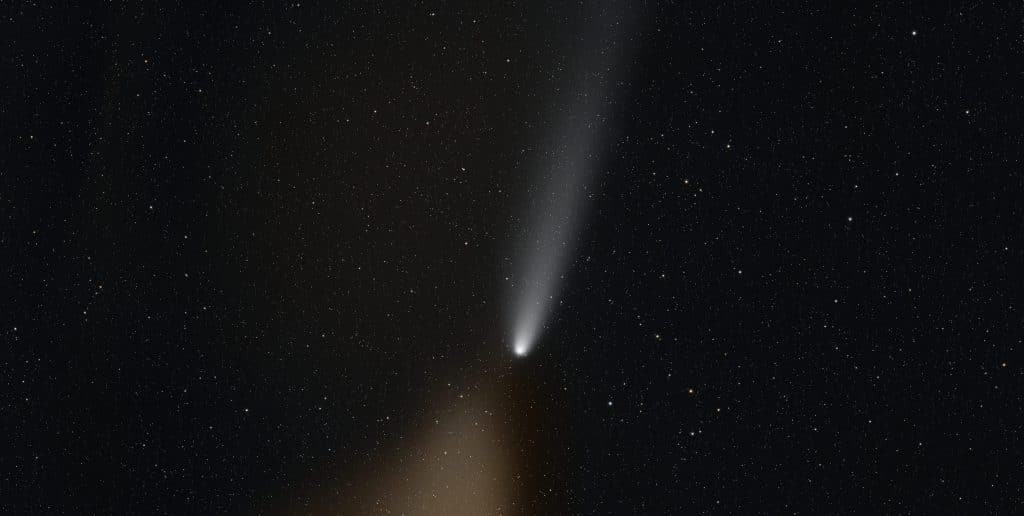Table of Contents
Disclamer
I bought this telescope out of my own pocket – Sharpstar Optics and Askar has no say in what I write – it is my honest opinion about this scope. I hope it will make sense to you – if you are looking to find a new telescope, weather it is your first ever telescope or it is something for another rig. You might find some insight on this scope here.
My initial thoughts
I have been using my new telescope the Askar 71F for the past few months. I must say I have been impressed with the quality of this telescope. During the past months, I have gathered light on two targets, mainly, NGC 7000 – the North American Nebula and one of my favourites, IC 1396 the Elefant’s Trunk Nebula. Unfortunately, I have not had many clear nights with time for imaging.

Now that I have been using my telescope for a few months I will post a more in-depth review of the telescope.
The technical specifications of the Askar 71F
This little telescope promises good quality optics, and a flat field for an entire full frame chip, this was partly the reason for me to get this telescope since I have a Nikon Z5 which I have been using to capture the night sky.
Askar describes the telescope as:
- Lightweight
- compact
- affordable
- quadruplet flat-field Astrograph which can be used for visual observing and astrophotography.
The telescope has and Aperture size of 71 mm and a focal length of 490 mm this result in a focal ratio
f=\frac{490~\mathrm{mm}}{71~\mathrm{mm}} = 6.9at f/6.9 it is by no means a fast telescope compared to eg. the William Optics Gran Turismo 81/478 with an f-ratio of 5.9. But the Askar has a favour over the Gran Turismo, which is the price. It was build to be affordable without compromising on quality. The construction is an air-space Quadruplet APO with a single ED-glass element, in the front group.
The telescope has a gross weight of 3.0 kg when mounted with tube-rings and dovetail plate, which seem ideal for a star tracker like my Sky-Watcher Star Adventurer GTi. The telescope is fitted with a 1:10 rack and pinion focuser – pre-prepared for an auto focuser like the ZWO EAF.
Build quality of the Askar 71F
The build quality of the Askar 71F is excellent. The optical tube is made from aluminium and with an extendable dew-shield that locks with a little thumb screw. The dew shield will protect the scope from any stray light. The tube rings and the vixen-style dovetail plate are also in sturdy aluminium which provides a solid base for the telescope to be connected to the mount.
On to of the tube rings a small rail has been added, this is ideal for mounting the guide scope if you do not use one of the two mounting shoes and the rear of the telescope.
The Askar 71F comes with accessories for visual observation in the form of two eyspeices an 8mm and a 20 mm as well as an erecting 45 degree prism. The telescope also provide a photographic adaptor that steps the threading from M64 to M48 – which fits most cameras or T2 rings nicely.

Using the telescope
This telescope is excellent, especially if you are getting into this hobby since it will provide excellent image quality at an affordable price. By now youtube is full of good recommendations of this telescope, eg Damon Scotting who provide a good and honest description of this amazing telescope.
If you are new to the hobby of astrophotography you have probably come across a lot of talk on backfocus. This is one of the most difficult things to get right when you are new to the hobby. However since this telescope is an astrograph you do not need to worry about the backfocus of the telescope. Most cameras will be able to achieve focus, without worrying too much about the backfocus.
The telescope is ideal for something like my startracker and the setup simply work outstandingly. In my time testing the telescope I have recorded data on a few different targets.
- NGC 7000 – The North American Nebula
- IC 1396 – The Elephants Trunk Nebula
- IC 1805 – The Heart Nebula
- M31 – The Andromeda Galaxy
- C/2023 A3 Tsuchinshan-ATLAS comet.
All of the targets were captured using my main setup, with the Nikon Z5 (unmodded) as the image sensor. No filters were used, hence all the colours are those that come out of the camera. Below you can find some samples of the images captured with this telescope, else you might want to have a look at my image of The magnificent North American Nebula.
Conclusion
To wrap it all up, I have been extremely happy to work with this telescope. It is an absolute joy and I would wish that there were more clear skies here in Denmark to observe the stars with my fantastic little telescope. I will give it my strongest recommendations.






